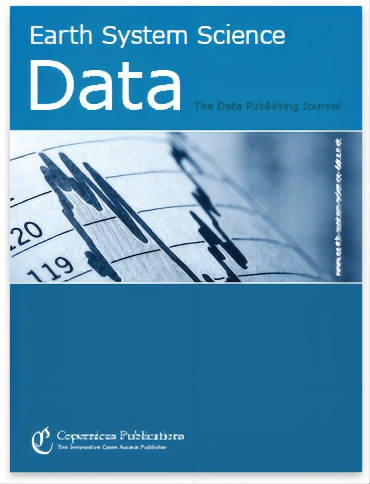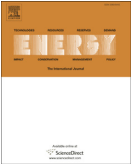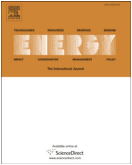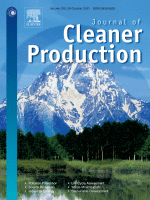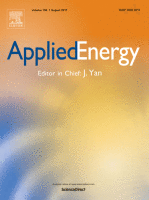CNG2020政策影响
-
Impacts of the proposal of the CNG2020 strategy on aircraft emissions of China–foreign routes
Aviation emission accounting is the key to establishing market measures to control aviation pollutant emissions. Based on the fuel percentage method (FPM), this paper applies the improved BFFM2-FOA-FPM (Boeing Fuel Flow Method 2–First Order Approximation FPM) to calculate the emissions of six pollutants (CO2, CO, HC, NOx, SO2, and PM2.5) between Chinese and foreign cities from 2014 to 2019, including CCD (climbing, cruising, and descending) emissions and LTO (landing and take-off) emissions. The error rate between the calculated results and the official data is about 2.75?%. The results show that the emissions of six pollutants changed before and after the proposal of the “Carbon Neutral Growth 2020” strategy (CNG2020 strategy). Although the total amount has increased, the average emission per tonne-kilometer of CO2, CO, HC, NOx, SO2, and PM2.5 has decreased by 17.77?%, 17.26?%, 25.15?%, 14.32?%, 17.77?%, and 16.35?%, respectively. The results of this paper can provide a data basis and method reference for implementing the CNG2020 strategy and realizing global carbon emission reduction goals. The dataset is available from https://doi.org/10.6084/m9.figshare.20071751.v1 (Cui., 2022).
-
Investigating the Profit Pollution Abatement Costs difference before and after the “Carbon neutral growth from 2020” strategy was proposed
Based on the empirical data of 22 airlines during 2014–2019, the paper studies the impact of the introduction of Carbon neutral growth from 2020 (CNG2020) strategy on airlines' pollution abatement costs. This research considers the prices of inputs and outputs, and proposes a new Profit Pollution Abatement Costs (PPAC) index to ensure that the calculated Net Pollution Abatement Costs (NPAC) index is a cost index rather than a physical index, and a two-stage network environment production function is established to discuss the NPAC differences before and after the CNG2020 strategy was proposed. The main findings are: (a)The introduction of CNG2020 strategy has had a certain degree of impact on the airlines’ net pollution abatement costs. (b)All Nippon Airways has the largest NPAC among the 22 airlines, while Delta Air Lines and Finnair have excellent pollution abatement performance during 2014–2019. (c)Aviation carbon emissions are closely related to jet fuel consumption and route distance.
-
Which airline should undertake a large emission reduction allocation proportion under the "carbon neutral growth from 2020" strategy? An empirical study with 27 global airlines
The “Carbon Neutral Growth from 2020″ strategy (CNG2020 strategy) has predicted the total emission reduction amount but has not arranged the special emission reduction proportion for an individual airline. In this paper, we build a DEA model to calculate the emission reduction allocation proportion and explore the impacts of a different carbon price. We select Number of Employees, Fleet Size, and Aviation Kerosene as then inputs, and set Total Revenue as the output. Then we apply BP neural network to predict the data from 2021 to 2023 based on the actual data of 27 global airlines from 2008 to 2018. We discuss the allocation proportions when the price is 8 dollars/ton, when the price is 14 dollars/ton and when the price is 20 dollars/ton. We have some findings: 1. Skyteam will have the largest average reduction allocation proportion in 2021 and 2023, while Oneworld will have the largest allocation proportion in 2022.2. The largest average ERAP in 2021 and 2023 is from Delta Air Lines, and the largest average ERAP in 2022 is from Air France-KLM.
-
Evaluating airline efficiency under “Carbon Neutral Growth from 2020” strategy through a Network Interval Slack-Based Measure
In this paper, we evaluate the efficiency of 24 global airlines with interval data from 2018 to 2022, as well as the impact of “Carbon Neutral Growth from 2020” strategy (CNG2020 strategy) on the interval efficiency of airlines during 2021–2022. We propose a Network Interval Slack-Based Measure model to discuss the difference in the interval efficiency of the airlines when CNG2020 strategy is considered. We find that CNG2020 strategy has little impact on most airlines’ overall efficiency, but has evident impacts on the efficiencies of the Operations stage and the Sales stage.
-
Investigating the airlines emission reduction through carbon trading under CNG2020 strategy via a Network Weak Disposability DEA
In response to the rapid growth in air transport CO2 emissions, International Civil Aviation Organization proposed the “Carbon Neutral Growth from 2020” strategy (CNG2020 strategy). The total CO2 emission reduction is investigated for 28 airlines during 2021–2023 under CNG2020 strategy based on the predicted data by BP neural network. A Network Weak Disposability DEA model is applied to calculate the airlines’ maximum desirable outputs when the inputs are fixed and the undesirable outputs are weakly disposed. Then carbon trading is added into the model, which can obtain the maximum desirable outputs when taking into account of carbon trading. Firstly, the total max Total Revenue of these 28 airlines is much larger than the total original Total Revenue gotten by BP neural network. Secondly, for these 28 airlines, the maximum expandable Total Revenue and Greenhouse gases emission reduction can be achieved simultaneously under CNG2020 strategy, but the Greenhouse gases emission reduction proportion is too small to satisfy the requirements of CNG2020 strategy.
-
Investigating the role of cooperation in the GHG abatement costs of airlines under CNG2020 strategy via a DEA cross PAC model
Based on the empirical data of 28 international airlines, this paper studies the impact of airline cooperation on Greenhouse gases (GHG) abatement costs under CNG2020 strategy. We propose a Data Envelopment Analysis (DEA) Cross PAC model to discuss the differences in pollution abatement costs (PAC) between arbitrary scene and cooperation scene. The main findings are as follows: 1. Airline cooperation helps to reduce the GHG abatement costs of most airlines. 2. Star Alliance and SkyTeam Alliance can help airlines reduce GHG abatement costs, but the Oneworld cooperation is not effective. 3. The GHG abatement costs of Iberia, British Airways, TAP Portugal, Finnair, Emirates and Singapore Airlines are zero.
-
Will airlines’ pollution abatement costs be affected by CNG2020 strategy? An analysis through a Network Environmental Production Function
In this paper, we investigate the impacts of the CNG2020 strategy on airlines' pollution abatement costs based on the empirical data of 29 global airlines. We build a Network Environmental Production Function to discuss the change of pollution abatement costs between the situation under CNG2020 strategy and without CNG2020 strategy. The main findings are: 1. Garuda Indonesia is predicted to have the largest pollution abatement costs while Lufthansa is predicted to have the best performance during 2021–2023. 2. CNG2020 strategy is predicted to have an evident influence on the pollution abatement costs of most airlines.
-
Airline efficiency measures under CNG2020 strategy: An application of a Dynamic By-production model
We evaluate airline dynamic efficiency under the background of “Carbon Neutral Growth from 2020” strategy (CNG2020 strategy). The data of 29 large global airlines from 2021 to 2023 is predicted by BP neural network based on the historical data of 2008–2015. A new model, Dynamic By-production model, is proposed to measure the dynamic efficiencies of these 29 airlines during 2021–2023. The main findings are: (1) Aeroflot, Air Berlin, Ryanair, Finnair, Virgin Atlantic and Eva Air are the benchmarking airlines. (2) The efficiency of pollution causing inputs is more important in deciding the overall efficiency change. (3) These airlines cannot meet the requirement of CNG2020 strategy in current situation.
-
Will airline efficiency be affected by “Carbon Neutral Growth from 2020” strategy? Evidences from 29 international airlines
In this paper, the impact of the “Carbon Neutral Growth from 2020” (CNG2020) strategy on airline efficiency is analyzed based on the predicted data of 29 international airlines during 2021–2023. The data is predicted through neural network. Following the principle of CNG2020 strategy, we calculate the emission limit for each airline. Two models, Network Range Adjusted Measure with natural disposability and Network Range Adjusted Measure with managerial disposability, are proposed to discuss the efficiency change when the CNG2020 strategy is considered. The following findings are gotten: 1. Under natural disposability, the indices related with undesirable output have a larger role in deciding benchmarking airline. 2. For most of the 29 airlines, CNG2020 strategy has little influence on their efficiency.
-
CNG2020 strategy and airline efficiency: A Network Epsilon-Based Measure with managerial disposability
In this paper, we analyze the impacts of CNG2020 strategy on the efficiency of 29 international airlines during 2021–2023. Predictions are made through neural networks based on the empirical data from 2008 to 2015. Following the principle of CNG2020 strategy, we calculate the emission limit for each airline. Then we propose a new model, Network Epsilon-Based Measure with managerial disposability, to discuss the difference in efficiency of the airlines when the CNG2020 strategy is considered. The main findings are: (1) For most of these 29 airlines, the CNG2020 strategy has little influence on their efficiency. (2) The efficiency has little variation under the following conditions: when the carbon price is 8 $/ton CO2-eq, when the price is 14 $/ton CO2-eq, and when the price is 20 $/ton CO2-eq. (3) Scandinavian is identified as the benchmarking airline.
-
Carbon neutral growth from 2020 strategy and airline environmental inefficiency: A Network Range Adjusted Environmental Data Envelopment Analysis
In this paper, we analyze the impacts of the Carbon Neutral Growth from 2020 strategy (CNG2020 strategy) on airline environmental inefficiency based on the predicted data of 29 international airlines during 2021–2023. The data is predicted through BP neural network. Following the principle of CNG2020 strategy, we calculate the emission limit for each airline. Then we propose a new model, Network Range Adjusted Environmental DEA, to discuss the environmental inefficiency change between the conditions with CNG2020 strategy and without CNG2020 strategy. The main findings are: 1. Garuda Indonesia has the largest inefficiency during 2021–2023, while Singapore is the benchmarking airline with the best performance. 2. For most airlines, CNG2020 strategy has a positive impact on their efficiency improvement. 3. The decrease of operating expenses slacks and the feasible expansion of total revenue are the main reasons for inefficiency decrease.
-
Airline efficiency measures using a Dynamic Epsilon-Based Measure model
In this paper, we focus on measuring airline dynamic efficiency. Number of Employees and Aviation Kerosene are chosen as the inputs. Revenue Tonne Kilometers, Revenue Passenger Kilometers and Total Revenue are the outputs. Capital Stock is selected as the dynamic factor. A new model, Dynamic Epsilon-Based Measure (DEBM) model, is proposed to evaluate the dynamic efficiencies of 19 airlines from 2009 to 2014. The main findings are: 1. Scandinavian, Emirates and Cathay Pacific are the benchmarking airlines among the 19 airlines. 2. The highest efficiency change index happens in 2010, which has close relationships with the financial crisis of 2008. 3. The output-oriented DEBM and non-oriented DEBM do well in reflecting the efficiency differences, while the input-oriented DEBM and output-oriented DEBM have good performance in mirroring yearly efficiency change.

